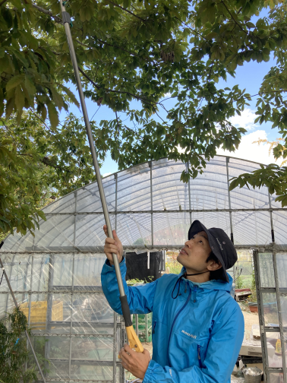What motivated you to pursue international agriculture, forestry, and fisheries research?
I started my doctoral research on Southeast Asian tropical rainforests in the graduate school doctoral program. Until then, I had been studying genes that control the timing of flowering (floral maturation) in the laboratory using a small plant called Arabidopsis thaliana. However, a series of coincidences led me to study abroad as a doctoral student and to drastically change my research methods to study the phenomenon of simultaneous flowering in tropical trees of the Dipterocarpaceae family. Simultaneous flowering is a mysterious phenomenon that occurs once every few years at irregular intervals, with many trees in a forest flowering in unison. In the course of this research, I learned that although the dipterocarp is an important forestry tree species, its population has been declining significantly along with the decrease in tropical rainforests, and I became interested in the sustainable forestry of the dipterocarp, which is also linked to the conservation of tropical rainforests.
Please introduce your current research.
In tropical Southeast Asia, temperature and precipitation are expected to change in the future due to climate change. Since it takes many years for trees to be harvested as timber, it is important to understand the environmental response of each forestry species and to select forestry species that will be affected by climate change in order to ensure stable timber production. Therefore, we are currently investigating the environmental responsiveness of various forest tree species, mainly Dipterocarpaceae, through environmental manipulation experiments, and identifying genes that cause differences in environmental responsiveness among species.
There are so many useful forest tree species in the tropics that it is difficult to conduct environmental manipulation experiments on all of them. However, if we can identify the gene sequences that cause differences in environmental responsiveness, we will be able to efficiently understand the environmental responsiveness of each species simply by examining the gene sequences, and we believe that this information can be used as an indicator when selecting tree species for planting in future climates.
What message would you like to convey to young researchers?
Some of you may be wondering whether or not to make a major change in your research field. Of course, it would be wonderful if you could follow through on your original intention, but there are many new things you will have to learn if you change fields, and I am sure there will be many difficulties. In fact, I sometimes feel that I have taken a detour by changing my field of study in the middle of my career. However, it is also true that through that detour, I was able to find an interesting research theme that I would like to work on in the future. Of course, a major change in research theme or methodology can be a risk, but it can also be a good chance to gain new insights.

